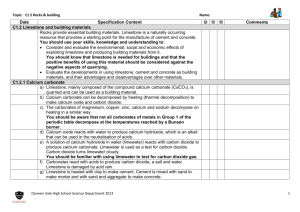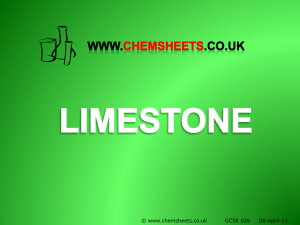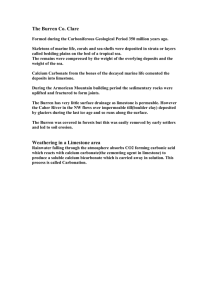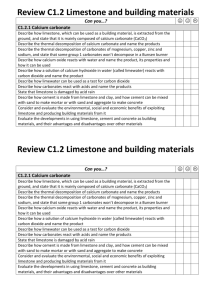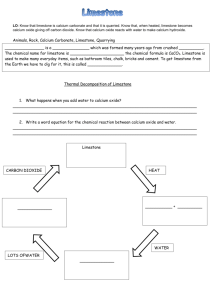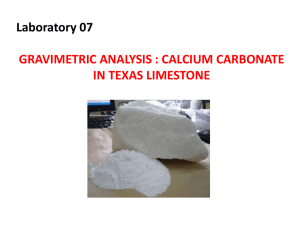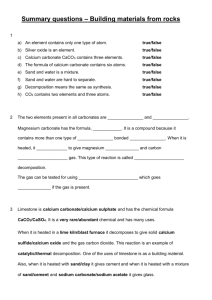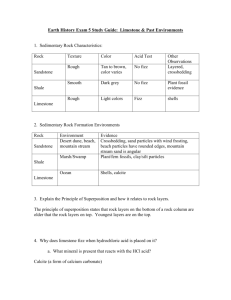C1.2.1 Calcium carbonate
advertisement
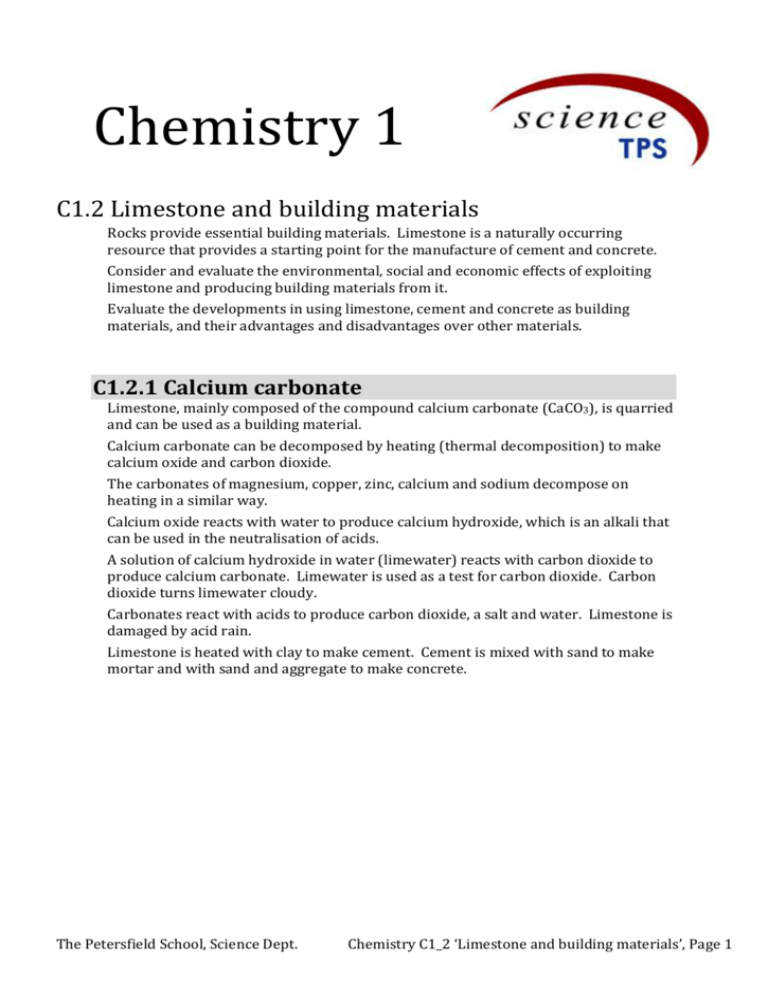
Chemistry 1 C1.2 Limestone and building materials Rocks provide essential building materials. Limestone is a naturally occurring resource that provides a starting point for the manufacture of cement and concrete. Consider and evaluate the environmental, social and economic effects of exploiting limestone and producing building materials from it. Evaluate the developments in using limestone, cement and concrete as building materials, and their advantages and disadvantages over other materials. C1.2.1 Calcium carbonate Limestone, mainly composed of the compound calcium carbonate (CaCO3), is quarried and can be used as a building material. Calcium carbonate can be decomposed by heating (thermal decomposition) to make calcium oxide and carbon dioxide. The carbonates of magnesium, copper, zinc, calcium and sodium decompose on heating in a similar way. Calcium oxide reacts with water to produce calcium hydroxide, which is an alkali that can be used in the neutralisation of acids. A solution of calcium hydroxide in water (limewater) reacts with carbon dioxide to produce calcium carbonate. Limewater is used as a test for carbon dioxide. Carbon dioxide turns limewater cloudy. Carbonates react with acids to produce carbon dioxide, a salt and water. Limestone is damaged by acid rain. Limestone is heated with clay to make cement. Cement is mixed with sand to make mortar and with sand and aggregate to make concrete. The Petersfield School, Science Dept. Chemistry C1_2 ‘Limestone and building materials’, Page 1

